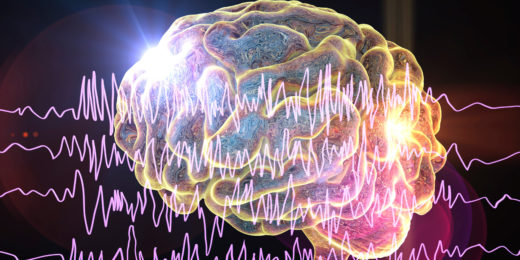About a third of the 65 million people worldwide who suffer from epilepsy have "refractory" forms, meaning medications or other treatments fail to control their seizures.
"This is a massive problem. In adults, but also for the millions of children with treatment-resistant epilepsy for whom it can be especially tragic because it can interrupt development and lead to stunted cognition, coordination and language development," said Stanford Medicine neuroscientist Ivan Soltesz, PhD, who has studied epilepsy for decades. "Unfortunately, because of a major bottleneck in the way new medications are studied and cleared for use, the search for new drugs that might help patients with refractory epilepsy is very slow going."
Currently, epilepsy drug discovery requires days or weeks of monitoring mice on a new medication to see if their seizures are reduced in number, made less intense or eliminated. The mice must be continuously videoed, and the electrical activity of their brains monitored through implanted electrodes. The approach is highly time-intensive, as it relies on seizures to occur (or subside) to determine a drug's efficacy, and it requires trained technicians to manually interpret videos of mouse behavior.
Soltesz, the James R. Doty Professor of Neurosurgery and Neurosciences, is the senior author of a paper published Feb. 24 in Neuron that points the way to a faster, less costly and potentially more accurate approach to evaluating experimental epilepsy medications. The new approach, called motion sequencing, originally developed by Harvard professor of neurosurgery Sandeep Robert Datta, MD, PhD, a co-author of the study, employs machine learning, a type of automated pattern recognition, to assess just a one-hour video of mouse behavior. No brain monitoring is required. And no seizures are required to do the analysis, either. In that single hour, and without the aid of a human interpreter, motion sequencing can determine with a high level of accuracy, whether a mouse has been helped by a medication or not.
"The approach could clear a serious bottleneck in drug discovery for epilepsy," said Soltesz, who worked on the study with a team of scientists from two other institutions. Motion sequencing also adds objectivity to these types of studies. "We could get a more conclusive analysis of the efficacy of a new drug compound in a fraction of the time and at a much lower cost to labs," Soltesz said.
How motion sequencing works
Six years ago, when the research team began the study, they set out to determine whether the newly developed motion sequencing technique would be up to the task of simply and efficiently distinguishing epileptic mice from non-epileptic ones. They also wanted to know whether the technique could detect something as subtle as whether a mouse had been given a particular drug or combination of drugs.
To set up the experiment, the research team first used motion sequencing's machine learning to analyze the behavior of mice with epilepsy and those without epilepsy. To do this, the program analyzed video of the two groups and broke all movements down into about 50 basic behavioral signals called "syllables." A syllable might be a subtle scrunching of the neck, for example, or a slight lurch to the right. These are generally less than a second long, too short to detect with the naked eye. The program then tracked the frequency of the syllables (and the frequency of various combinations of them) in the behavior of mice with and without epilepsy. Motion sequencing identified strong associations between the frequency of certain syllables or syllable patterns, and the likelihood that a mouse had epilepsy. In other words, by just analyzing a short period of apparently ordinary mouse behavior that did not even include seizures, the motion sequencing algorithm could accurately distinguish between mice with and without epilepsy.
The team also used motion sequencing to find distinctive patterns of syllables in mice that had been given three different anti-epilepsy drugs at various doses. Again, the program identified associations that could reliably and quickly tell whether a mouse had been given a drug and if so, which one and at what concentration.
Once trained to recognize all those associations, motion sequencing could quickly and automatically analyze the frequency and arrangement of behavioral syllables in just an hour of videotaped mouse behavior to determine with a high level of accuracy whether the mice had epilepsy and whether they'd received a particular drug.
When compared to each other, motion sequencing and the traditional approach were equally good at distinguishing epileptic from non-epileptic mice. "The big difference was that motion sequencing was much better than trained observers and conventional animal tracking approaches at picking out epileptic mice during the periods between seizures," says Tilo Gschwind, PhD, first author of the paper and an instructor of neurosurgery.
Although testing the efficacy of specific new drugs in mouse models was outside the scope of their study, said Gschwind, the work clearly demonstrates the feasibility of such applications. The study might even "provide mechanistic insights into still hidden features of the disease," he said.
Behavioral signatures point to neurologic mechanisms
Throughout the history of epilepsy research, seizures have been the primary focus of study and treatment. Yet, while seizures are the most salient features of epilepsy, they are hardly the only one. "Having a seizure for two minutes a month is bad, of course," said Soltesz. "But for many patients with epilepsy the much bigger problems are the comorbidities of seizures -- the anxiety, the cognitive deficits, depression, faltering language skills, the deterioration of overall quality of life." The neurological irregularities that cause seizures may still be present even during periods when no seizures occur. And of course, these periods make up most of a person with epilepsy's life. Doctors often refer to seizures as the visible tip of the pathological epilepsy iceberg. Motion sequencing could give neuroscientists a powerful new tool with which to explore the submerged parts.
The frequency and patterns of behavioral syllables that flag seizures are generated, like all behaviors, by specific neuronal constellations in the brain, said Soltesz. Just how those identified by motion sequencing are causally related to epilepsy is still unknown, but researchers could pair results from the algorithm and monitor the brain (with EEG, fMRI or other brain-activity-tracking techniques) to discover and study the networks engaged during epilepsy-indicating combinations of behavioral syllables. Such studies could reveal promising new leads in the search for the underlying mechanisms and causes of epilepsy and its comorbidities.
Clinical promise
Diagnosing epilepsy in human patients today is often a cumbersome, time-consuming and imprecise affair, requiring patients to spend uncomfortable hours, days, or sometimes weeks tethered to video monitors and brain-monitoring equipment just waiting and waiting for seizures to occur, said Soltesz.
"The obvious implication of this work is that you'd one day be able to substitute the mouse with a human," said Soltesz. "You'd just have to video a patient walking around an examination room for a while, and motion sequencing could make accurate inferences about whether they were likely to have seizures or not and about the effectiveness of their medications." That, at least, is the hope.
If patients could be diagnosed or evaluated this way, no EEG or seizures required, it could mean less costly, less unpleasant examinations that might lead to more precise and responsive treatment plans. "Combined with new anti-epilepsy drugs that could emerge from an industry cleared of a tight bottleneck, we could see major improvements in the lives of millions of epilepsy patients in coming years," said Soltesz.
Photo by 9dreamstudio






